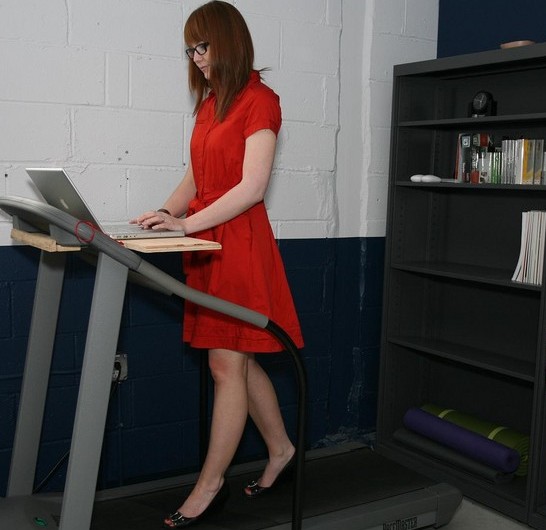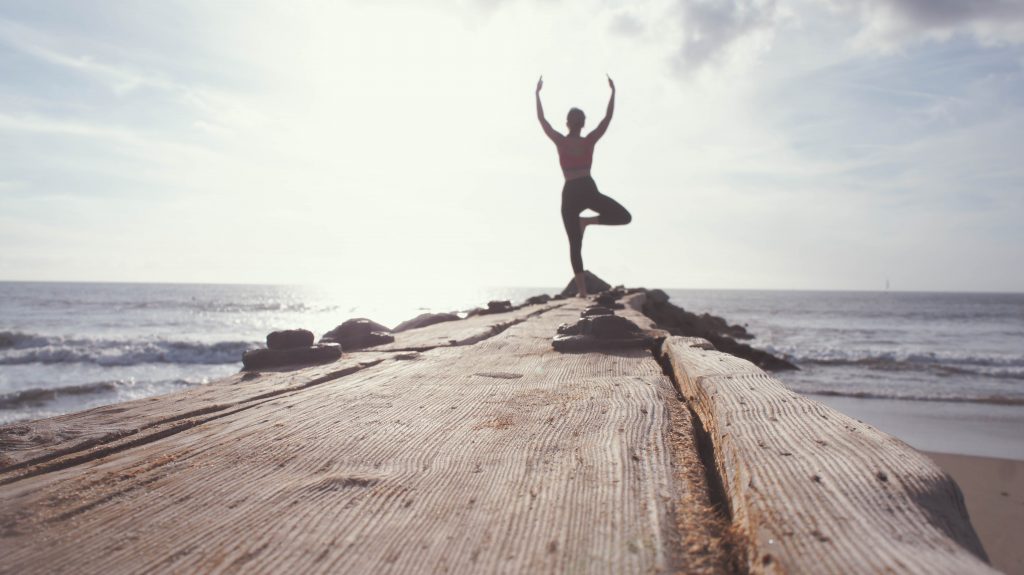
How Two Minutes of Walking Per Hour Can Save Your Life
Photo credit: Sharyn Morrow, via Flickr Creative Commons
An increasing number of employers are placing a higher value on employee health and fitness. Still, the majority of workplaces don’t emphasize fitness and are not equipped for it. This includes manual laborer and construction jobs, which are certainly more strenuous and physically tiring than a desk job, but still don’t always meet our standards of exercise.
Researchers concluded that two minutes of walking per hour was linked to 33% lower risk of death.
If you’re in a profession in which you spend most of your time sitting at a desk, you may be at the most risk of developing many of the diseases that are linked to inactivity. Studies reported in the Clinical Journal of the American Society of Nephrology (CJASN) have linked daily prolonged sitting to increased risk of premature death, as well as heart disease, diabetes, and other chronic health problems. For their analysis, the team used data on 3,243 participants in the 2003-04 National Health and Nutrition Examination Survey (NHANES). To monitor the intensity of their activity during waking hours, the survey had asked participants to wear accelerometers for several days. The participants were followed for three years after the activity data was collected. During this time 137 of them died. Researchers concluded that two minutes of walking per hour was linked to 33% lower risk of death.
Here are some quick and easy ways to incorporate exercise into your otherwise sedentary workday. These tips will improve both your energy and your health.
Get Up and Move
Aim to get up and out of your seat at least every 15-20 minutes. Since most desk-related jobs demand your constant attention, it’s important to remind yourself to move around. Try setting a small timer to remind you when your break is due. A kitchen timer, watch, or smart phone is simple and easy to use. Eventually you’ll look forward to this break and find it only helps your concentration at work.
Walk
What should you do during your “get up and move” break? Walking is typically easy to do on a brief break even if it’s for a minute or two. A brisk walk down a hallway and back or to the restroom can give you a quick energy boost as well as get blood flowing and muscles loosened up in your legs, buttocks, and lower back. These areas are the prime points of discomfort after being seated for a prolonged time.
Use Exercise Bands
It’s pretty hard to have a set of dumbbells in most office spaces, but exercise bands can stay in a drawer until you’re ready to move! Have a few bands of different resistance at your disposal. Either in your office or a quiet area, you can do some great strength training in just a few minutes without the need to change clothes. You can strength train most of your major muscle groups. During one break, you could do leg squats, then arm curls. On the next break, you could do heel raises, tricep press and bent over rows, and on your last break, a chest press and lateral raise. Even one set of 10-15 repetitions is enough to bring your body great energy and help combat the negative effects of sitting throughout the day.
Hit the Stairs
If you’re looking for something a bit more challenging, take your walk to the stairs. Walking stairs is one of the more challenging ways to exercise indoors and will get your body temperature up, heart pounding, and blood flowing in a short period of time. If you have multiple stairwells you may even be able to design a circuit or lap you can walk a few times, incorporating both stairs and hallways. Always remember to walk for a minute or two first before taking the stairs at an aggressive pace. Both your legs and heart will appreciate the brief warm up.
Use Your Breaks
If you get 15-minute breaks and a lunch you should eat for sure, but think about using some of this time for fitness. Does it really take you 30 minutes to eat or could you walk for the first 15 then eat during the rest? Don’t eat first then walk, as you may not digest your food as well.
Get a Partner
In most offices, start talking to colleagues who are looking to become more active. Find someone else who wants to walk and schedule your breaks together. Not only will this help with motivation and encouragement, but will be a great example to others.
Use an Activity Tracker
Utilizing a step counter or more sophisticated activity tracker can tell you exactly how active you are during the work hours. You can track the days where you took your breaks and even tie this together with a journal of how you feel. This may provide you good insight as to the importance of fitness during your hectic workday.
How have you incorporated fitness and activity into your busy workday?








